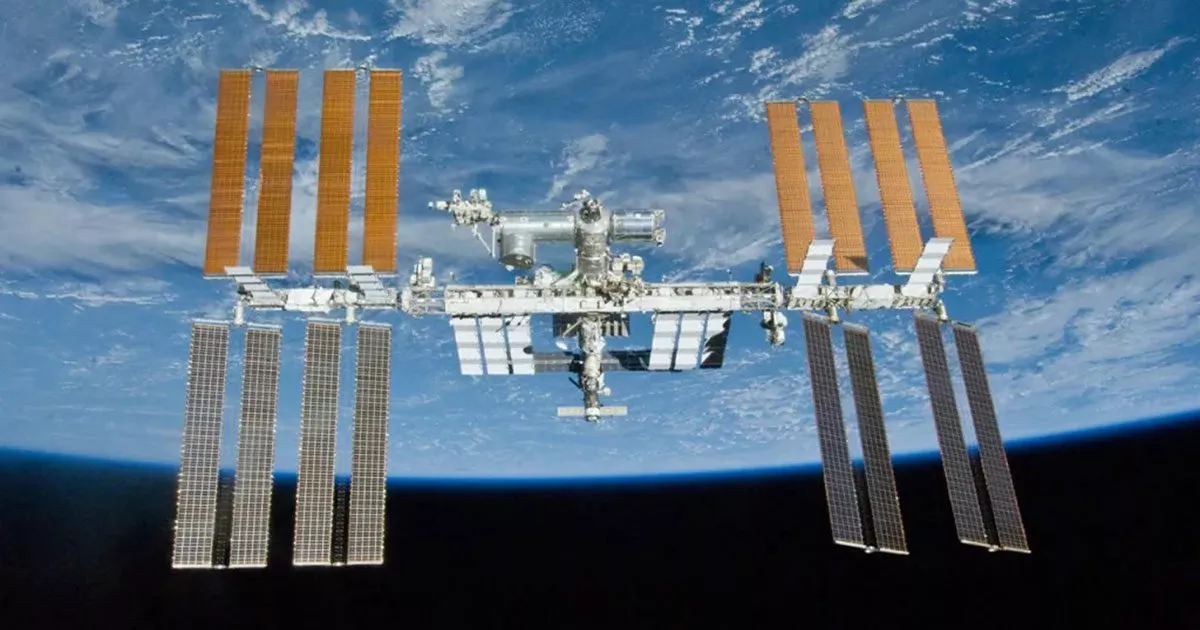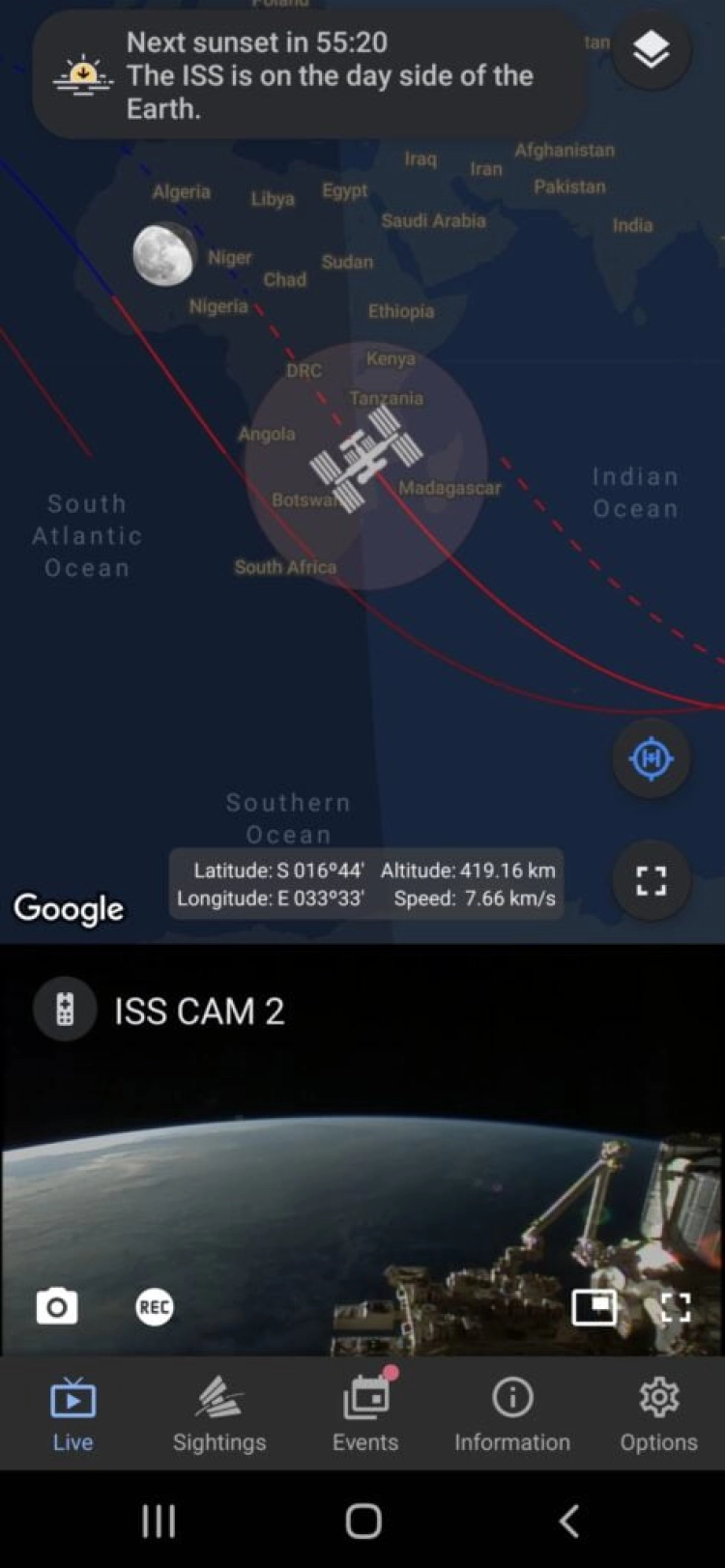

Did you know that there’s a gigantic space laboratory whizzing over your head at approximately 17,500 miles per hour, completing an orbit around our planet every 90 minutes? That’s right; we’re talking about the International Space Station (ISS), a marvel of international collaboration and human ingenuity that has been continuously inhabited since the year 2000.
A product of the collective efforts from five leading space agencies – NASA (United States), Roscosmos (Russia), JAXA (Japan), ESA (Europe), and CSA (Canada) – the ISS is an epitome of global unity in the pursuit of knowledge and exploration. This habitable artificial satellite, spanning the length of a football field (if we consider the solar arrays), was methodically assembled in orbit, piece by piece, since the launch of its first component in 1998.
The International Space Station isn’t just a celestial home for a crew of six astronauts; it’s also a state-of-the-art laboratory where cutting-edge research is carried out across various disciplines, including biology, physics, astronomy, and meteorology. The unique microgravity environment aboard the ISS offers a platform for experiments that aren’t possible on Earth. This has led to significant advancements in medical research, material science, and our understanding of fundamental physical processes.
In the realm of biology, the ISS has been pivotal in studying the effects of long-term spaceflight on the human body. Research conducted on the station helps us understand muscle atrophy, bone density loss, and the impacts on the cardiovascular system, which are critical for planning future long-duration missions to Mars and beyond.
Physics experiments on the ISS include studies on fluid dynamics, combustion, and material properties in microgravity. These experiments have practical applications on Earth, such as improving combustion engines' efficiency and understanding the behavior of materials in extreme conditions.
The ISS also serves as a platform for educational outreach and commercial ventures. Educational programs like the "Amateur Radio on the International Space Station" (ARISS) allow students worldwide to communicate with astronauts, fostering interest in STEM (Science, Technology, Engineering, and Mathematics) fields. Additionally, the ISS has opened its doors to private companies for research and commercial projects, paving the way for a burgeoning space economy.
An exciting feature of the ISS is its visibility from Earth. Yes, you read that right. This spacecraft can be seen with the naked eye, appearing as a bright, moving dot in the night sky. Online tools and apps like NASA’s Spot the Station can guide you on when and where to look based on your location. It’s a surreal experience to watch the ISS glide across the sky, knowing there are humans aboard conducting groundbreaking research.
However, time is of the essence if you wish to spot the International Space Station. Discussions were underway about the station’s future, with some predicting that operations could continue until 2030 or beyond. But the day will inevitably come when this incredible space laboratory will be retired. The decommissioning will see the ISS deorbit and burn up in the Earth’s atmosphere, creating a spectacular, fiery display in the sky.
That said, the legacy of the ISS will not end there. Plans are already in the pipeline for future space stations. China, for instance, has begun work on its Tiangong space station, and private companies like Axiom Space are planning commercial space stations that could serve as successors to the ISS.
The ISS stands as a testament to what can be achieved through international cooperation. Despite geopolitical tensions, the space agencies of different nations have managed to work together harmoniously, sharing resources, knowledge, and the dream of exploring space. This cooperation has set a precedent for future space endeavors, highlighting the importance of unity in the pursuit of scientific progress.
Life aboard the ISS is a unique blend of scientific rigor and everyday routines. Astronauts spend their days conducting experiments, maintaining the station, and exercising to counteract the effects of microgravity on their bodies. They also share meals, communicate with loved ones back on Earth, and enjoy stunning views of our planet from the Cupola, a dome-shaped module with seven windows providing a panoramic view of Earth and space.
The ISS continues to inspire millions around the globe. Its presence reminds us of the potential for human ingenuity and perseverance. It’s a beacon of hope, showing that when we come together, we can achieve extraordinary feats. The stories and images from the ISS captivate the imagination, encouraging the next generation of scientists, engineers, and explorers to reach for the stars.
So, the next time your local weatherman announces an ISS sighting, step outside and gaze upwards. Marvel at this beacon of human achievement gliding across the night sky. It’s an awe-inspiring reminder of our capacity for exploration, our thirst for knowledge, and our ability to collaborate across borders in the pursuit of a common goal. Remember, the ISS is more than just a point of light speeding across the sky; it’s a symbol of our never-ending quest to understand the universe around us.
I am an Android guy, if you are too, you must try: ISS on Live. This Android app is an incredible tool for anyone interested in space and the International Space Station (ISS).
ISS on Live doesn’t just tell you where the ISS is located at any given moment; it does so much more. It’s like having a mini space station right in your pocket.
One of the standout features of this app is its live-streaming capability. Whenever there’s a significant event happening related to NASA or SpaceX, you can watch it unfold in real-time directly on your phone. This is an incredible feature for those who love to stay updated on space explorations and advancements.
But the innovation doesn’t stop there. With ISS Live, you won’t have to guess where to look in the sky when the ISS is about to pass overhead. The app uses your phone’s compass to guide you, pointing you in the right direction and showing the exact trajectory the ISS will take across the sky.
For an even more immersive experience, ISS on Live lets you view what the astronauts aboard the ISS are seeing with two different onboard cameras. You can witness our beautiful planet from a perspective few get to see – all without leaving your backyard.
One of the most user-friendly features of the app is its notification system. It alerts you five minutes before a sighting is about to occur, so you’ll never miss the chance to spot the ISS zooming across the night sky.
Here’s a screenshot from my phone to give you a glimpse of what the app has to offer:

Whether you’re a budding astronomer, a seasoned space enthusiast, or just curious about the universe, I highly recommend trying out ISS on Live or a similar app. It’s a fantastic way to engage with the cosmos and marvel at human ingenuity, represented by the tiny dot of light that is the ISS streaking across the sky. Happy stargazing, and keep your eyes on the sky for the International Space Station!